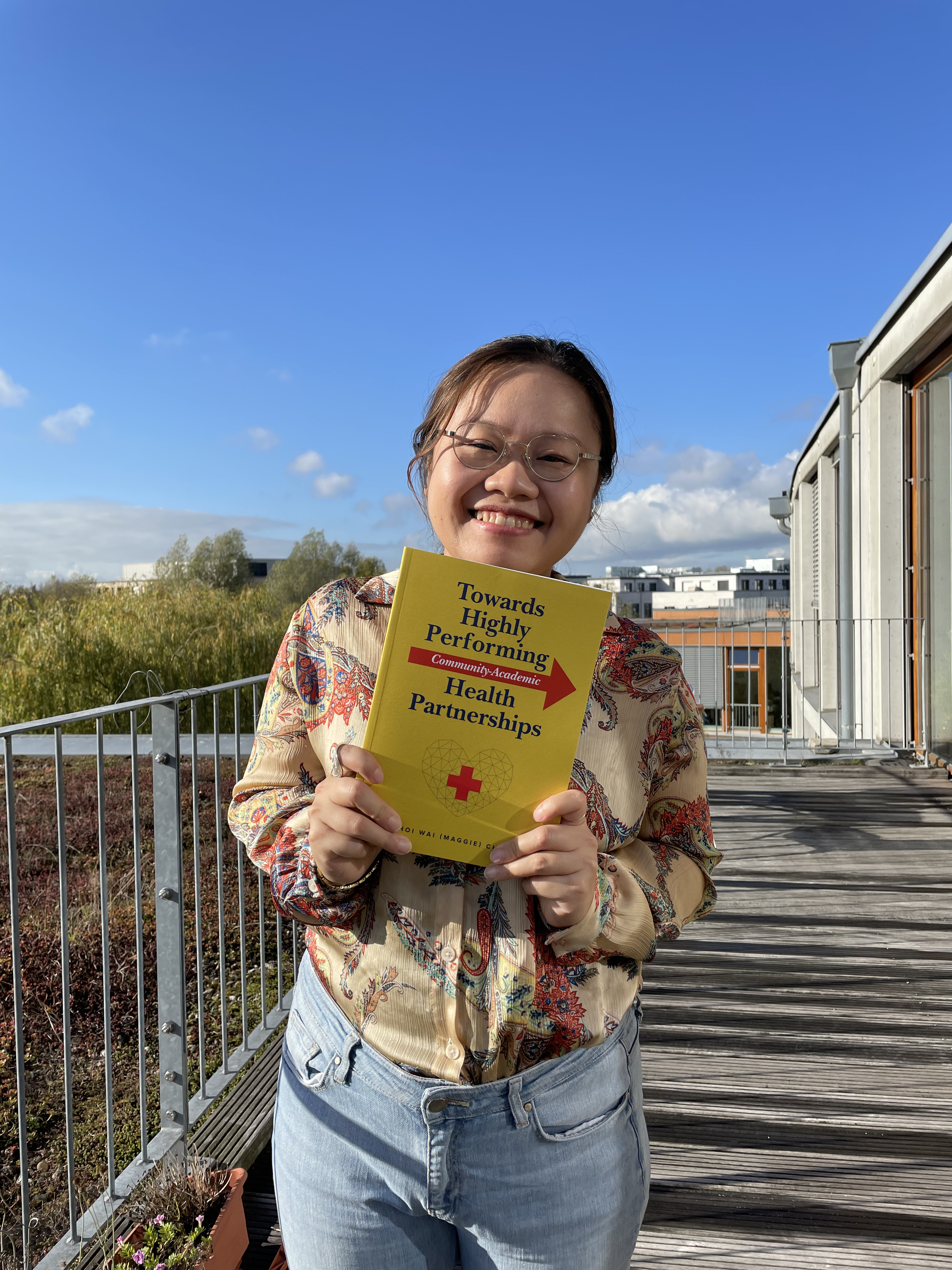04 November 2022 | Münster
S2BMRC team member Choi Wai Maggie Chak published her Ph.D.-Thesis on "Towards Highly Performing Community-Academic Health Partnerships".
The dissertation was conducted as part of a cooperative doctoral program between FH Münster University of Applied Sciences (Germany) and University of Twente (Netherlands). Her supervisor is Prof. Dr. C.P.M. Wilderom and co-supervisor is Dr. L. Carminati from the Faculty of Behavioural, Management and Social Sciences (BMS).

For decades, Community-Academic Health Partnership (CAHP) has been a common form of collaborative, networked organization that aims to address complex health problems and bridge the knowledge-practice gaps in health care. However, many CAHP projects fail to prove their added value to society due to resource intensiveness, structural complexity, and lacking performance or sustainability. This dissertation employs different theoretical lenses from an Organizational Behavior (OB) perspective to scrutinize how project workers and leaders perceive and respond to these challenges and constraints inherent in their CAHP environments to pursue high project performance. It introduces, reports, and discusses three stand-alone yet intertwined empirical chapters based on two quantitative and qualitative field studies. Each chapter unravels the complex dynamics of an enabler of highly performing partnership processes (namely workers' perceptions of project goals, workers' perceived sufficiency of project resources, and effective project leaders(hip), respectively) in meeting various challenges and constraints and enhancing project performance in diverse CAHP settings.
Steered by Goal-setting Theory, Chapter 2 presents a convergent mixed-methods study examining the boundary conditions of project workers' project goal perceptions on project performance in different CAHPs. It examines how CAHP workers' perceptions of project goal clarity, goal stress, and goal importance could collectively affect their perceived project performance, a proxy indicator commonly used to assess the performance of (ongoing) CAHPs. Results from 268 CAHP workers showed that given high goal clarity, CAHP workers who perceived their project goals as important can better manage the stress associated with demanding goals and reported higher project performance.
Chapter 3 draws on the Goal-setting and Job Demands-Resources theories to investigate the mechanisms of how CAHP workers' perceived sufficiency of two commonly cited and interrelated project resources (i.e., collaborative project leadership and financial project resources) enhance their perceived project performance. A sequential explanatory mixed-method study was conducted to examine how project workers can mobilize various project resources (i.e., human, financial, and personal cognitive-motivational resources) to achieve high project performance and their effects on project workers' goal commitment and -stress. Survey results from 318 participants showed that CAHP workers' hope can play a crucial role in facilitating their ability to cope with challenges, and hope can be reinforced by highly collaborative leadership and adequate financial resources. Hopeful CAHP workers also tend to be more committed to the project, experience lower stress due to demanding goals, and report higher project performance. Moreover, results from semi-structured interviews with 21 CAHP project leaders further elucidated how these factors are interlinked in real-life CAHP project settings.
Chapter 4 reports an inductive, qualitative study looking into one of the most influential enablers of a CAHP project's success and sustainability considered by CAHP researchers: its leadership. The study investigated the processes that facilitate project leaders to perform their leadership functions and roles well in different CAHPs. Results from in-depth, semi-structured interviews with 32 CAHP project leaders reveal the strategies project leaders took to perform their leadership tasks effectively and identified four beneficial qualities that helped them develop into effective leaders during the project cycle. Evidence also suggests that regardless of project leaders' leadership style(s), they could use the triadic complexity leadership logic to excel in a CAHP project. Based on these findings, a process model was constructed to illustrate the dynamic developmental processes of effective CAHP project leaders(hip).
The contribution of this dissertation is four-fold. Firstly, it provides deeper insights into the collective impact of the dynamics between the three different key enablers and the inherent project challenges and constraints on promoting highly performing CAHPs. Secondly, this work elucidates how these enablers shape high project performance in diverse CAHPs. Thirdly, it highlights the useful skills, strategies, and qualities that project workers should develop or mobilize to cope with the unique contextual challenges of implementing CAHPs effectively. Fourthly, it advances the nascent CAHP development in the German-speaking regions by providing theory-driven, evidence-based findings that ensure such partnerships function well in practice.
In summary, this research presents theory-driven, evidence-based findings of CAHP practice and offers recommendations to guide practitioners, leaders, policymakers, and funders toward better planning, management, and functioning of CAHPs.


